Abstract
To examine the effects of oleic acid and ricinoleic acid on jejunal absorption, steady-state jejunal perfusions were performed in healthy volunteers. Taurocholate, used to solubilize the fatty acids, did not influence absorption. Both fatty acids (concentration, 10 mM) reversed electrolyte and water net movement; that is, they induced fluid secretion; this effect was rapidly reversible. Ricinoleic acid (the active principle of castor oil) was the more potent, producing fluid secretion when perfused at concentrations at which oleic acid was without effect. However, ricinoleic acid was absorbed more slowly than was oleic acid, and hence was associated with higher intraluminal concentrations. Addition of lecithin and monoolein did not diminish the secretory effect of ricinoleic acid; addition of a secretory bile acid (taurodeoxycholate) did not enhance the effect. The response of the jejunal mucosa to a known cathartic provides observations pertinent to the pathophysiology of steatorrheal diseases in man. Dietary fatty acid also has secretory properties with respect to the human intestine; bacterial hydration, to hydroxy fatty acids, is not required to induce fluid secretion.
Full text
PDF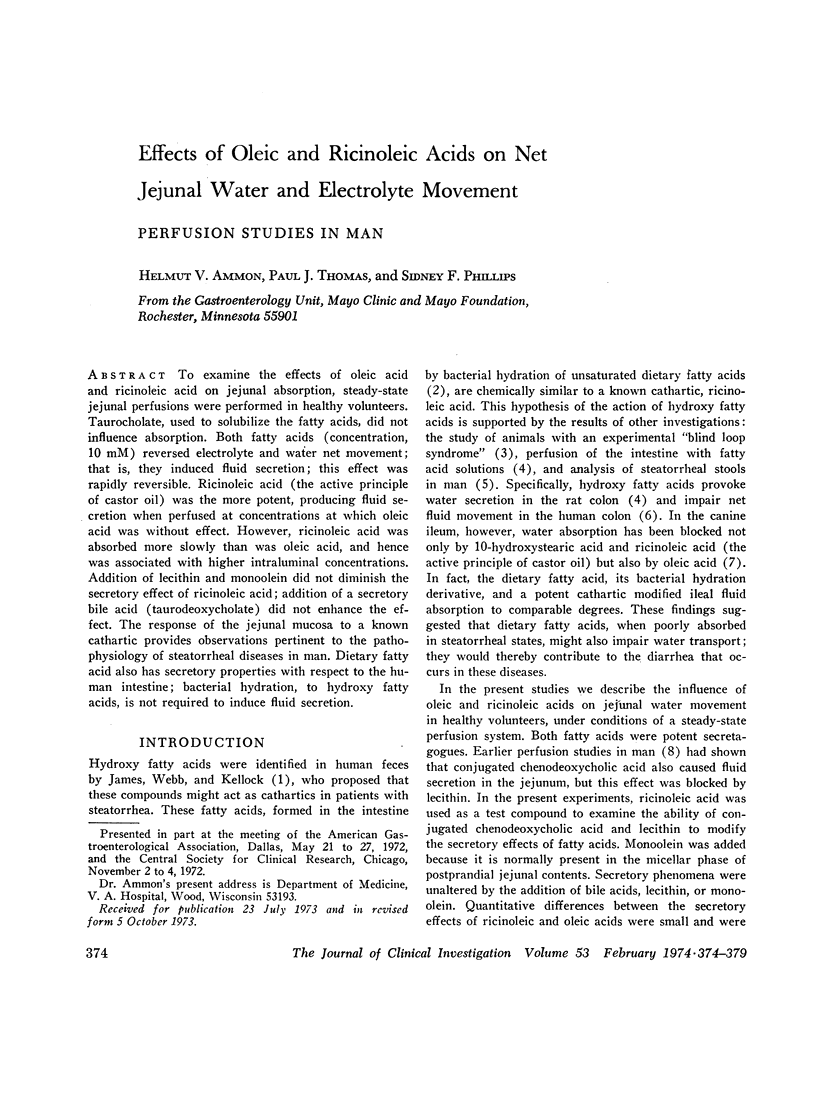
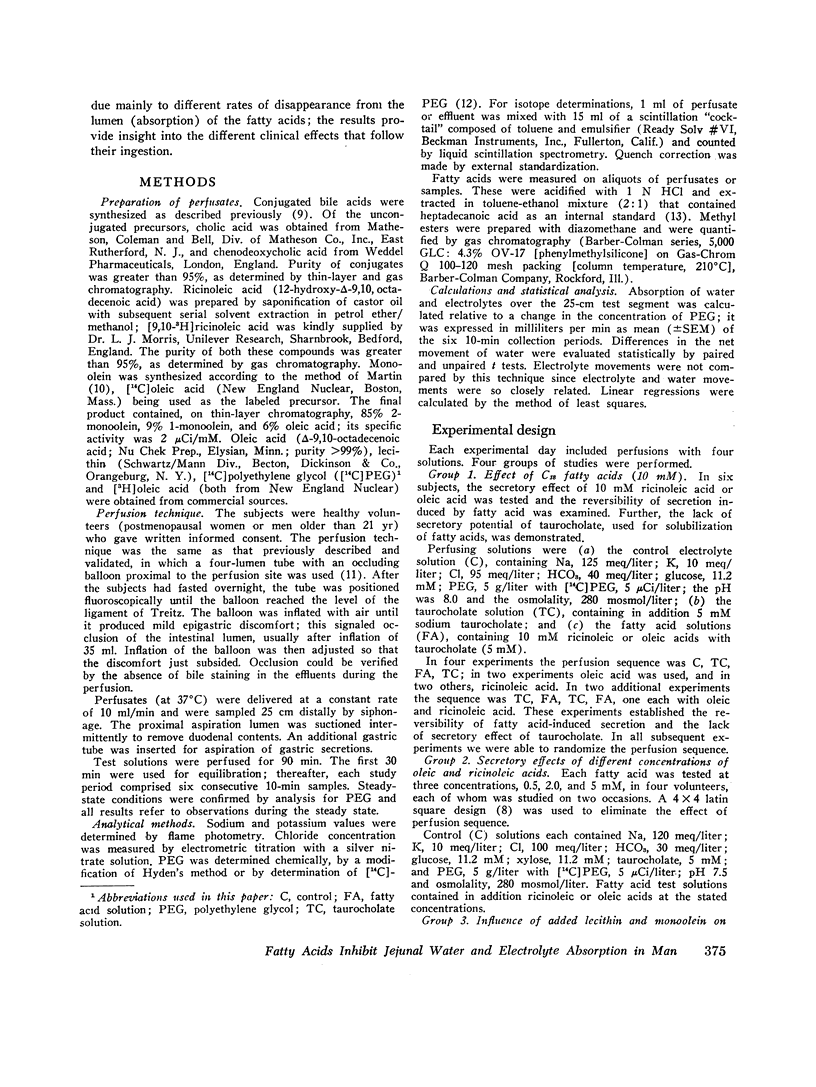
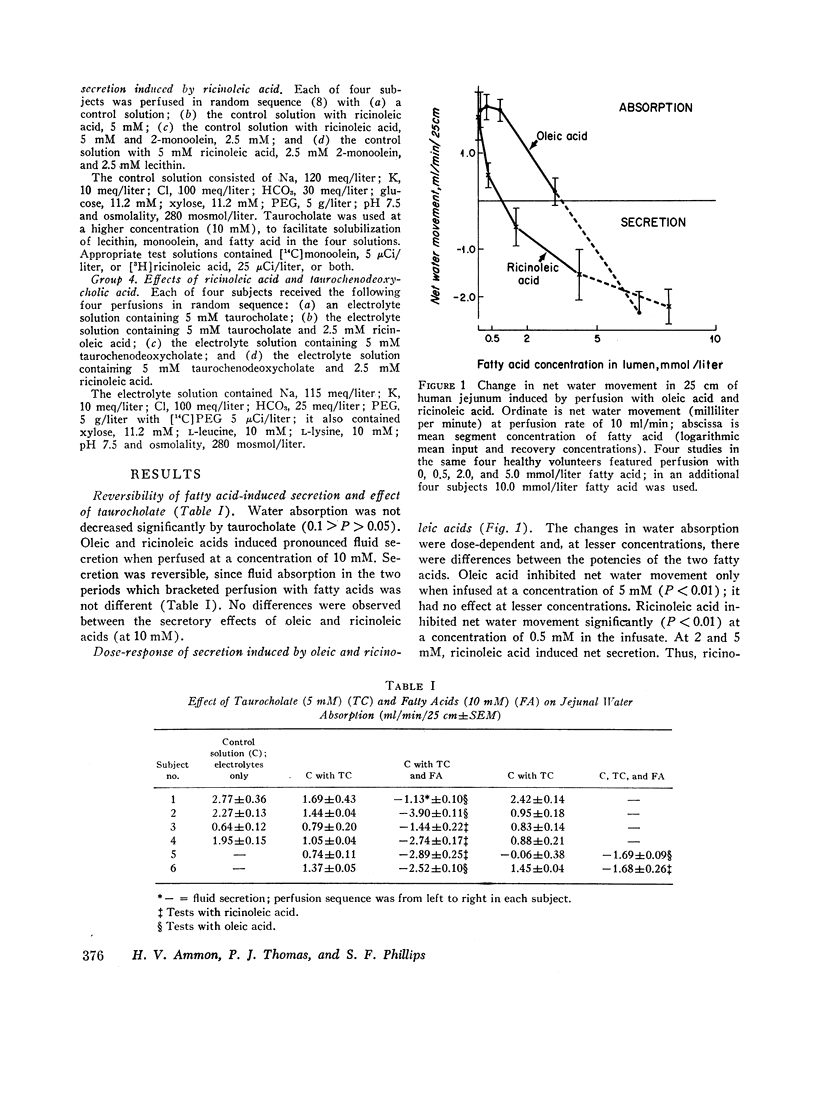
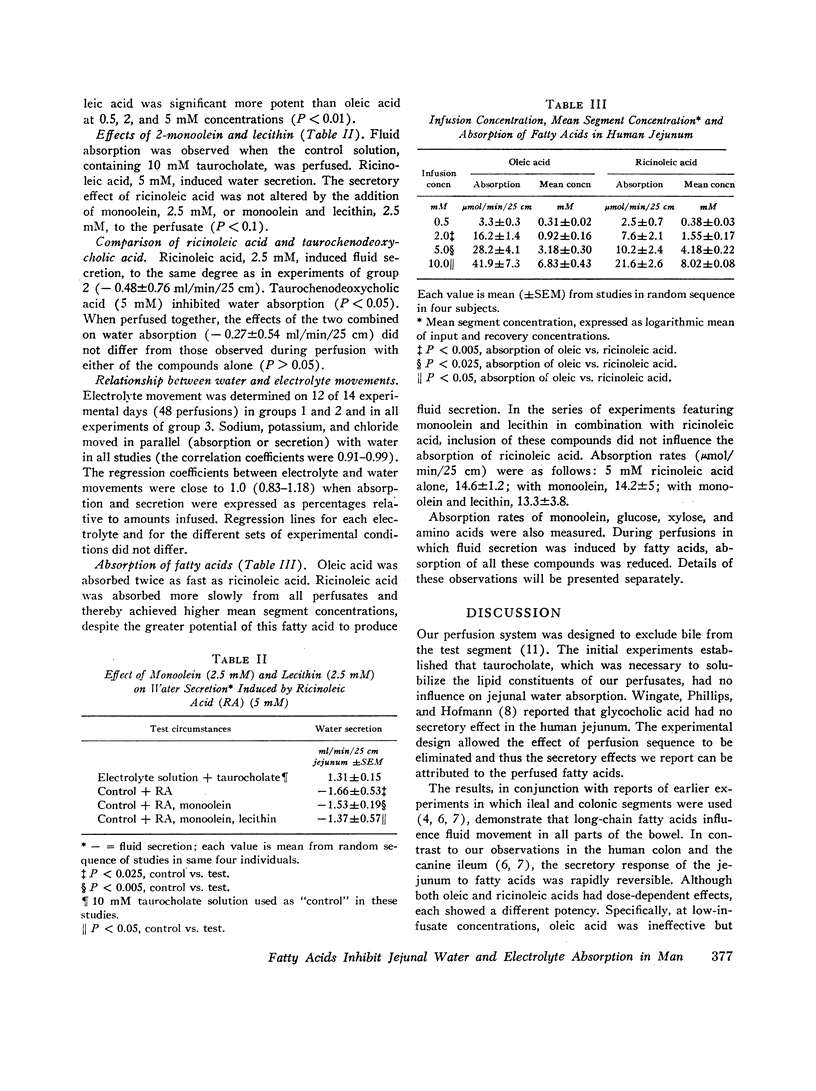
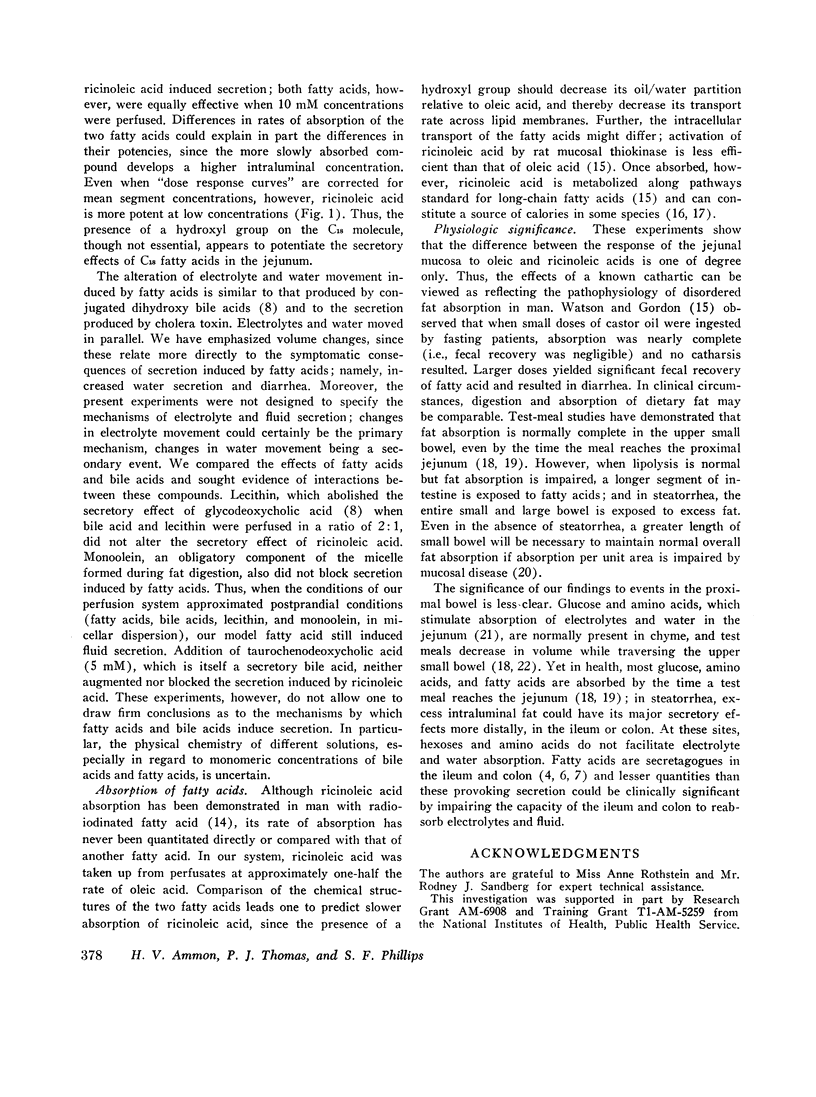
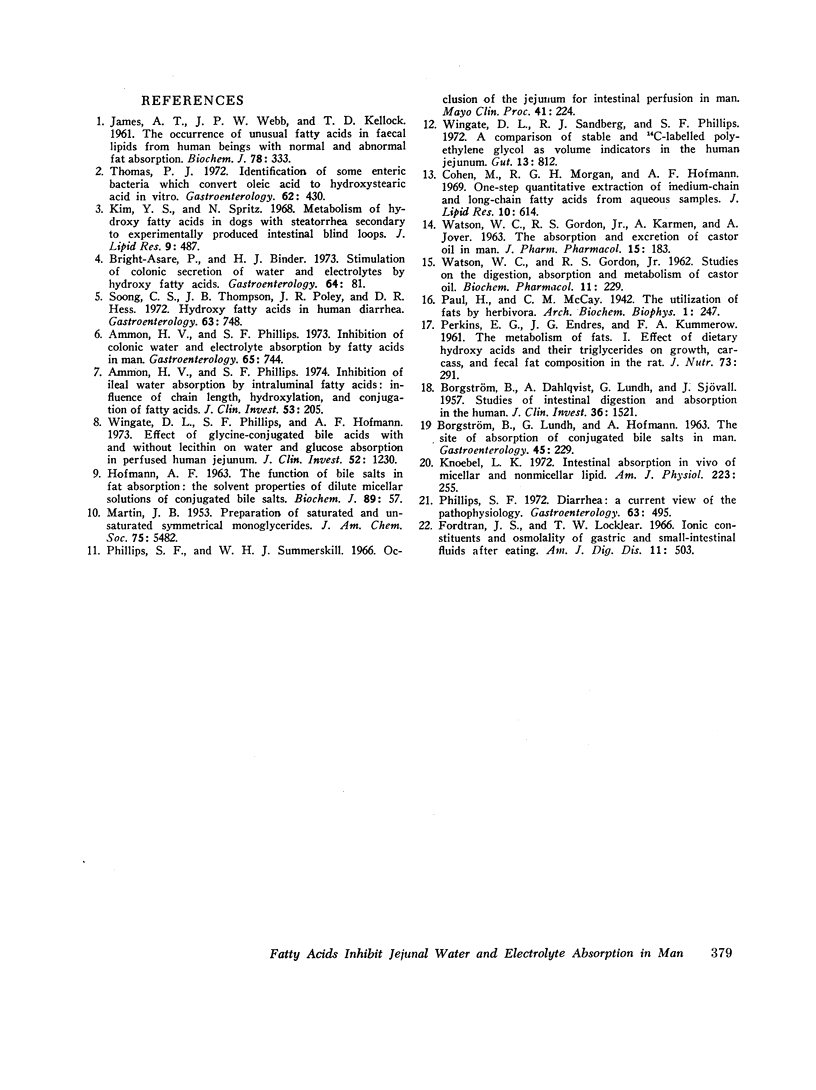
Selected References
These references are in PubMed. This may not be the complete list of references from this article.
- Ammon H. V., Phillips S. F. Inhibition of colonic water and electrolyte absorption by fatty acids in man. Gastroenterology. 1973 Nov;65(5):744–749. [PubMed] [Google Scholar]
- Ammon H. V., Phillips S. F. Inhibition of ileal water absorption by intraluminal fatty acids. Influence of chain length, hydroxylation, and conjugation of fatty acids. J Clin Invest. 1974 Jan;53(1):205–210. doi: 10.1172/JCI107539. [DOI] [PMC free article] [PubMed] [Google Scholar]
- BORGSTROEM B., LUNDH G., HOFMANN A. THE SITE OF ABSORPTION OF CONJUGATED BILE SALTS IN MAN. Gastroenterology. 1963 Aug;45:229–238. [PubMed] [Google Scholar]
- BORGSTROM B., DAHLQVIST A., LUNDH G., SJOVALL J. Studies of intestinal digestion and absorption in the human. J Clin Invest. 1957 Oct;36(10):1521–1536. doi: 10.1172/JCI103549. [DOI] [PMC free article] [PubMed] [Google Scholar]
- Bright-Asare P., Binder H. J. Stimulation of colonic secretion of water and electrolytes by hydroxy fatty acids. Gastroenterology. 1973 Jan;64(1):81–88. [PubMed] [Google Scholar]
- Cohen M., Morgan R. G., Hofmann A. F. One-step quantitative extraction of medium-chain and long-chain fatty acids from aqueous samples. J Lipid Res. 1969 Sep;10(5):614–616. [PubMed] [Google Scholar]
- Fordtran J. S., Locklear T. W. Ionic constituents and osmolality of gastric and small-intestinal fluids after eating. Am J Dig Dis. 1966 Jul;11(7):503–521. doi: 10.1007/BF02233563. [DOI] [PubMed] [Google Scholar]
- HOFMANN A. F. THE FUNCTION OF BILE SALTS IN FAT ABSORPTION. THE SOLVENT PROPERTIES OF DILUTE MICELLAR SOLUTIONS OF CONJUGATED BILE SALTS. Biochem J. 1963 Oct;89:57–68. doi: 10.1042/bj0890057. [DOI] [PMC free article] [PubMed] [Google Scholar]
- JAMES A. T., WEBB J. P., KELLOCK T. D. The occurrence of unusual fatty acids in faecal lipids from human beings with normal and abnormal fat absorption. Biochem J. 1961 Feb;78:333–339. doi: 10.1042/bj0780333. [DOI] [PMC free article] [PubMed] [Google Scholar]
- Kim Y. S., Spritz N. Metabolism of hydroxy fatty acids in dogs with steatorrhea secondary to experimentally produced intestinal blind loops. J Lipid Res. 1968 Jul;9(4):487–491. [PubMed] [Google Scholar]
- Knoebel L. K. Intestinal absorption in vivo of micellar and nonmicellar lipid. Am J Physiol. 1972 Aug;223(2):255–261. doi: 10.1152/ajplegacy.1972.223.2.255. [DOI] [PubMed] [Google Scholar]
- Phillips S. F. Diarrhea: a current view of the pathophysiology. Gastroenterology. 1972 Sep;63(6):495–518. [PubMed] [Google Scholar]
- Phillips S. F., Summerskill W. H. Occlusion of the jejunum for intestinal perfusion in man. Mayo Clin Proc. 1966 Apr;41(4):224–231. [PubMed] [Google Scholar]
- Soong C. S., Thompson J. B., Poley J. R., Hess D. R. Hydroxy fatty acids in human diarrhea. Gastroenterology. 1972 Nov;63(5):748–757. [PubMed] [Google Scholar]
- Thomas P. J. Identification of some enteric bacteria which convert oleic acid to hydroxystearic acid in vitro. Gastroenterology. 1972 Mar;62(3):430–435. [PubMed] [Google Scholar]
- WATSON W. C., GORDON R. S., Jr, KARMEN A., JOVER A. The absorption and excretion of castor oil in man. J Pharm Pharmacol. 1963 Mar;15:183–188. doi: 10.1111/j.2042-7158.1963.tb12768.x. [DOI] [PubMed] [Google Scholar]
- WATSON W. C., GORDON R. S., Jr Studies on the digestion, absorption and metabolism of castor oil. Biochem Pharmacol. 1962 Mar;11:229–236. doi: 10.1016/0006-2952(62)90078-3. [DOI] [PubMed] [Google Scholar]
- Wingate D. L., Phillips S. F., Hofmann A. F. Effect of glycine-conjugated bile acids with and without lecithin on water and glucose absorption in perfused human jejunum. J Clin Invest. 1973 May;52(5):1230–1236. doi: 10.1172/JCI107290. [DOI] [PMC free article] [PubMed] [Google Scholar]
- Wingate D. L., Sandberg R. J., Phillips S. F. A comparison of stable and 14 C-labelled polyethylene glycol as volume indicators in the human jejunum. Gut. 1972 Oct;13(10):812–815. doi: 10.1136/gut.13.10.812. [DOI] [PMC free article] [PubMed] [Google Scholar]


